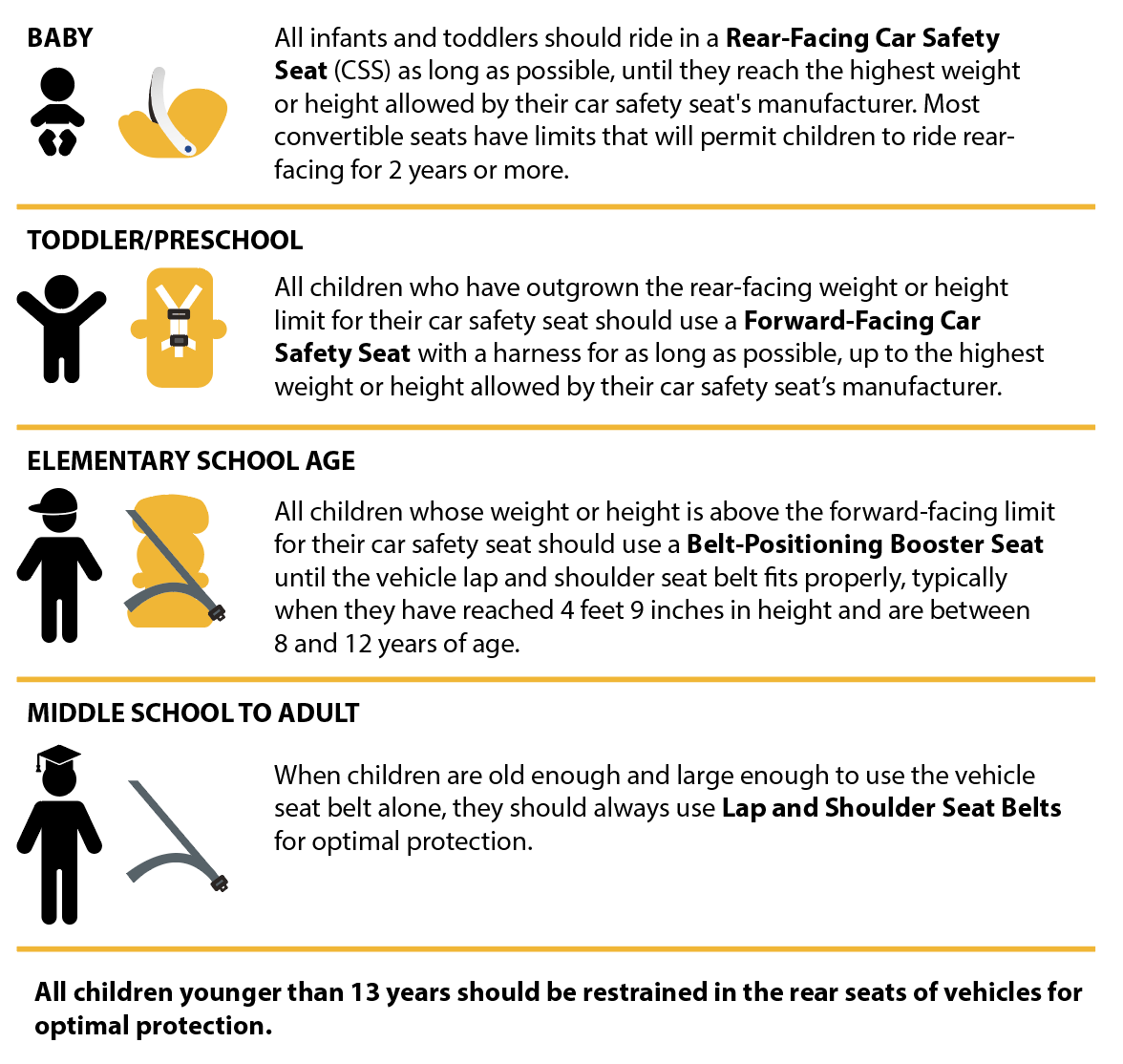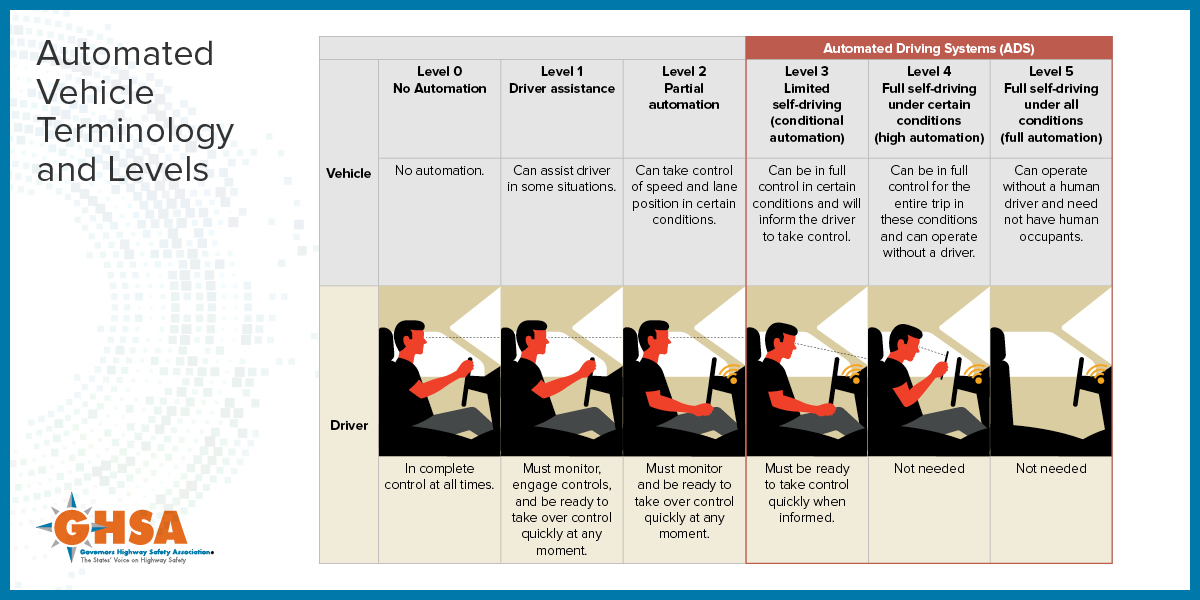You are here
Kids In Autonomous Vehicles Response and Terminology
Response to Report by the Blue Ribbon Panel on
Children in Autonomous Vehicles
Here are some of the responses to the October 2018 Blue Ribbon Panel report.
Terminology and Additional Resources on Children in Autonomous Vehicles and Child Passenger Safety
As autonomous vehicle development challenges our thinking about “drivers” and “passengers,” the traffic safety community will need to define the term “child” as it pertains to children in autonomous vehicles. The scope of this blue ribbon panel was limited to focus on children through age 12. This narrow focus enabled experts to establish an initial set of priority focus areas. The panel recognizes additional focus should be placed on children of all ages in and around AVs as this rapidly evolving field takes shape.
Based on current best practices, there are four different stages of restraint use (see image below) needed to ensure the safety of children.

Source: Text from the American Academy of Pediatrics, 2018
For more background information about autonomous vehicles, visit:
- Preparing for The Future of Transportation
- The National Highway Traffic Safety Administration Automated Vehicles for Safety
- The Auto Alliance Automated Driving Systems
- National Conference of State Legislatures
- Governor’s Highway Safety Association (GHSA), August 2018 Report Preparing for Automated Vehicles: Traffic Safety Issues for States
- Uber ATG Report
Similar terminology exists to describe this emerging technology — automated, self-driving, autonomous and driverless. But these terms don’t all mean the same thing. Today, many new vehicles include automated features such as lane keeping assistance, adaptive cruise control and parking assistance, but a driver is still required to take control at any time. SAE International (the Society of Automotive Engineers) defines six levels of automation — from no automation (where a fully engaged driver is required at all times) to full automation (where the vehicle can operate independently without a human driver).

